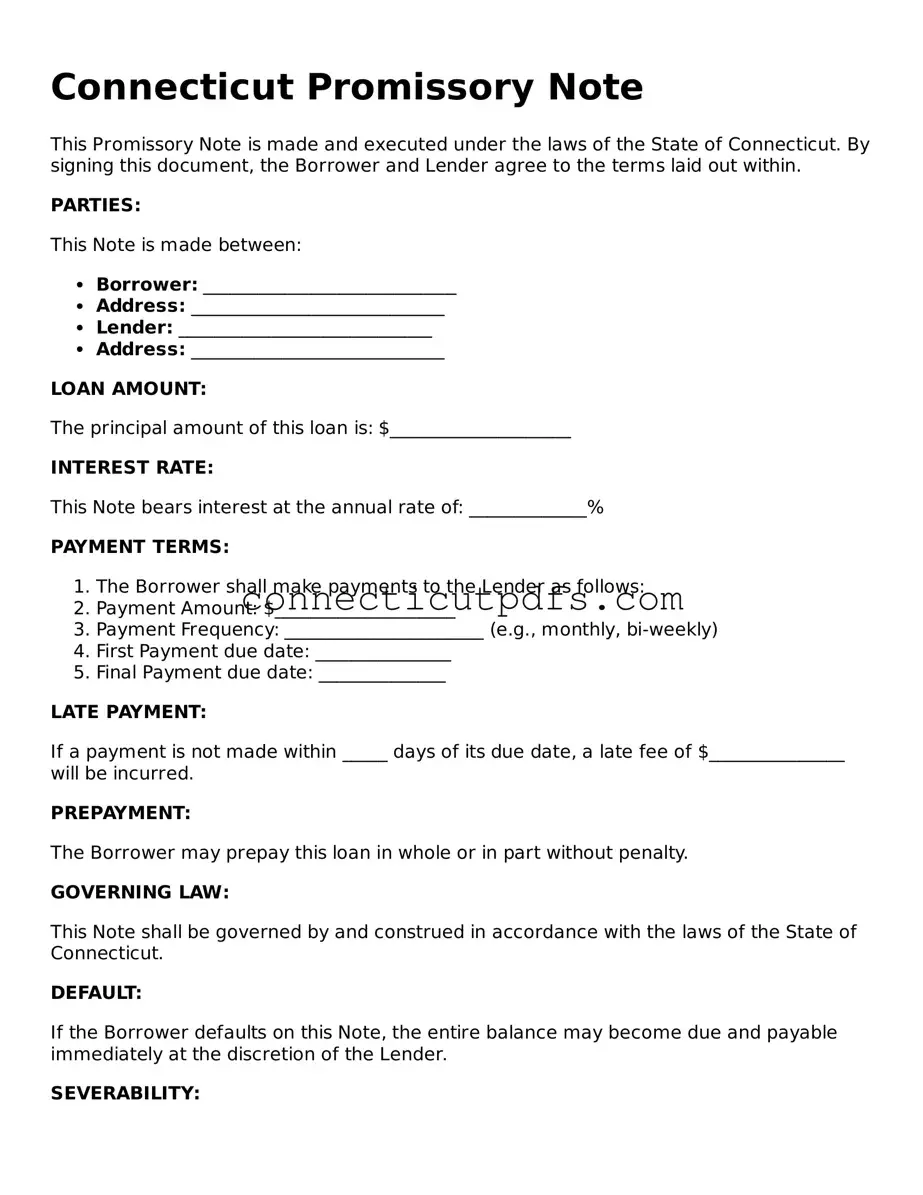What is a Connecticut Promissory Note?
A Connecticut Promissory Note is a written promise to pay a specific amount of money to a designated person or entity at a specified time or on demand. It serves as a legal document that outlines the terms of the loan, including the interest rate, payment schedule, and any consequences for non-payment.
Who uses a Promissory Note in Connecticut?
Individuals and businesses commonly use Promissory Notes. Lenders, such as banks or private investors, utilize these documents to formalize loans. Borrowers may include anyone needing to secure funds, whether for personal use, business expansion, or other financial needs.
What information should be included in a Connecticut Promissory Note?
A valid Promissory Note should include the following details: the names and addresses of the borrower and lender, the principal amount, the interest rate, the repayment schedule, and any late fees or penalties. Additionally, it should specify the governing law, which in this case is Connecticut law.
Is a Promissory Note legally binding?
Yes, a properly executed Promissory Note is legally binding. Once signed by both parties, it creates an enforceable obligation for the borrower to repay the loan according to the agreed terms. If the borrower defaults, the lender can take legal action to recover the owed amount.
Do I need a lawyer to create a Promissory Note?
While it is not legally required to have a lawyer draft a Promissory Note, it is advisable, especially for larger loans or complex agreements. A lawyer can help ensure that the document complies with state laws and adequately protects the interests of both parties.
Can a Promissory Note be modified after it is signed?
Yes, a Promissory Note can be modified if both parties agree to the changes. It is essential to document any modifications in writing and have both parties sign the amended note to maintain its enforceability.
What happens if the borrower defaults on the Promissory Note?
If the borrower defaults, the lender has several options. They can pursue legal action to recover the owed amount, initiate collection procedures, or negotiate a new payment plan. The specific actions depend on the terms outlined in the Promissory Note.
Where can I obtain a Connecticut Promissory Note form?
You can obtain a Connecticut Promissory Note form from various sources, including online legal document providers, local stationery stores, or by consulting with a legal professional. Ensure that the form you choose complies with Connecticut state laws.
